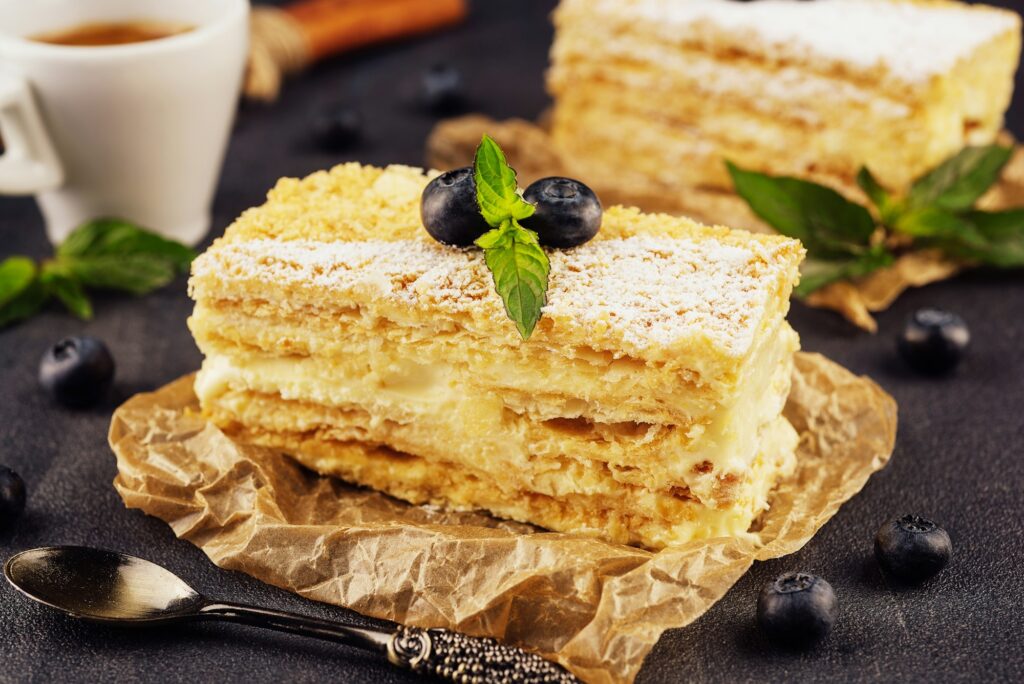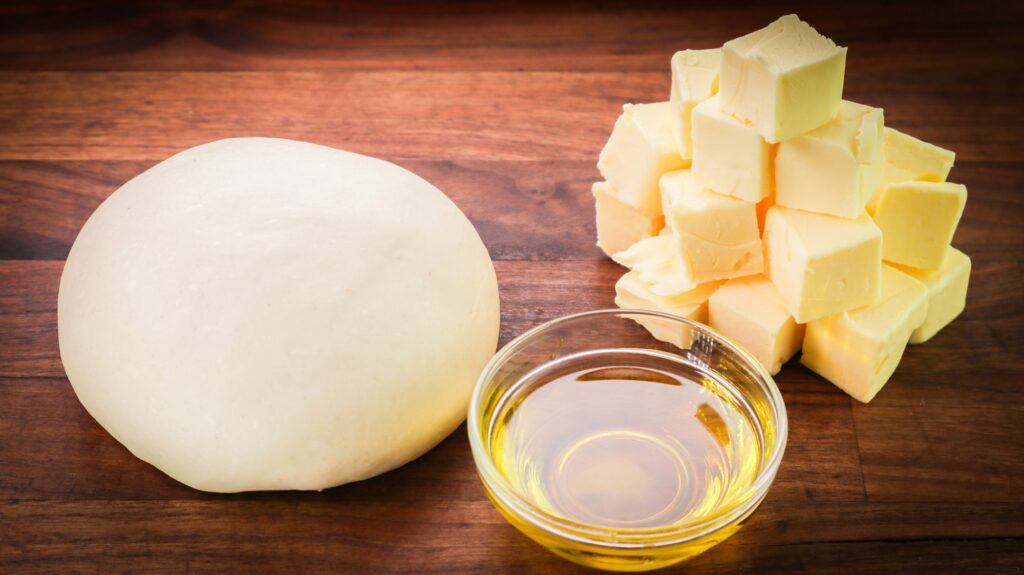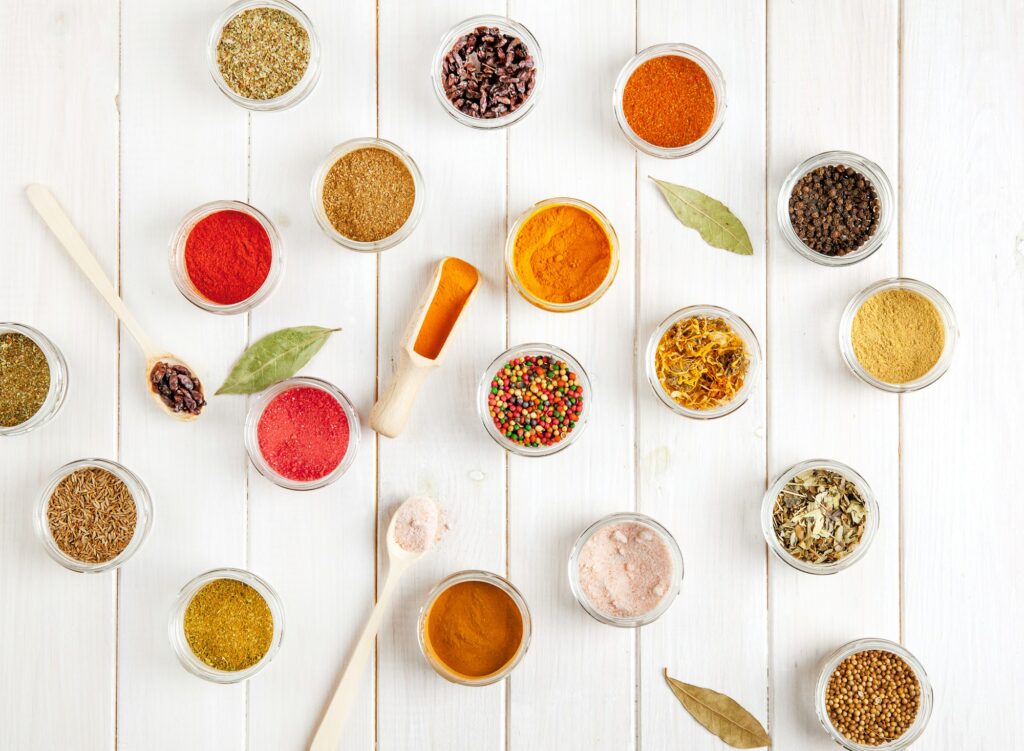Vanilla dessert shells, a staple in the world of sweets, serve as the foundation for an array of delectable desserts. These crisp, flavorful bases are integral to the structure of many pastries, holding everything from fresh fruits to creamy custards. Understanding what goes into these dessert shells is crucial, not only for those with a sweet tooth but also for anyone keen on baking or culinary arts.
Whether you’re catering to dietary restrictions, navigating food allergies, or simply personalizing your desserts, the components of these shells play a pivotal role. From the type of flour used to the source of the vanilla flavor, each ingredient contributes to the final product’s taste, texture, and overall appeal.
This article will dive deep into the composition of vanilla dessert shells, examining the key ingredients and methods behind their creation. We’ll explore everything from the nuanced flavors imparted by different vanilla flavoring agents to the structural role of various flours and fats. Understanding these elements equip you to make informed choices about your dessert creations, whether you’re following a classic recipe or venturing into new culinary territories.
Analysis of Ingredients in Vanilla Dessert Shells
Vanilla Flavoring Agents
The soul of a vanilla dessert shell lies in its flavoring. The choice between natural vanilla extract and artificial flavorings can significantly impact the shell’s taste and quality. Natural vanilla, derived from the pods of the vanilla orchid, offers a complex, rich flavor profile that artificial counterparts struggle to replicate. However, cost and availability often lead bakers to consider synthetic options, which can still produce a pleasing vanilla essence. This section also links to the Nielsen-Massey Foundation, which provides in-depth information about understanding vanilla.
Flour and Starch Components
The backbone of a dessert shell’s structure comes from its flour and starch components. Options range from traditional wheat flour to alternatives like rice flour and cornstarch, each bringing unique properties to the mix. Wheat flour, for instance, offers gluten, which lends elasticity and strength, while rice flour and cornstarch can be used to achieve a lighter, gluten-free shell. Understanding these components’ roles in texture and consistency is essential for anyone experimenting with vanilla shell recipes.
Sweetening Agents: More Than Just Sugar
When crafting the perfect vanilla dessert shell, the choice of sweetening agents extends far beyond the traditional granulated and powdered sugars. These classic options are undoubtedly popular, but exploring alternative sweeteners can introduce a world of flavor nuances and textures, transforming a simple shell into a gourmet experience.
- Granulated sugar provides a clean, straightforward sweetness, ideal for achieving a crisp shell texture.
- Powdered sugar, with its fine texture, lends itself to smoother doughs and subtly sweet finishes.
- Alternatives like honey and maple syrup not only sweeten but also impart distinctive flavors—floral notes from honey and a rich, earthy tone from maple. These natural sweeteners can modify the shell’s moisture content, offering a chewier texture compared to the crispness sugar typically provides.
- Adjusting sweetness levels with these alternatives can greatly influence the overall taste profile of your dessert, making the selection of a sweetening agent a crucial aspect of recipe development.
Integrating these sweeteners into vanilla shell recipes not only caters to varying palates but also accommodates dietary preferences, such as reducing processed sugar intake. This approach aligns with current trends towards more natural and health-conscious baking, emphasizing the role of sweetening agents in culinary innovation.
Fats and Oils: The Key to Texture and Flavor
Equally important to the creation of vanilla dessert shells is the choice of fats and oils. These ingredients significantly impact the mouthfeel, structure, and even the shelf life of the finished product. Each type of fat offers unique characteristics, influencing the baking process and the sensory experience of the dessert.
- Butter is renowned for its capacity to add depth of flavor and a luxurious richness to dessert shells. It also contributes to a tender crumb, a hallmark of quality in baked goods.
- Vegetable oil is praised for its role in creating a lighter, crisper texture. It ensures the shells have a uniform crumb and can enhance the shelf life due to its liquid state at room temperature.
- Shortening, a solid fat, is often used to achieve a flakier texture. It’s particularly effective in recipes where a firm structure is desired without the pronounced flavor that butter brings.
The strategic selection of fats and oils can dramatically affect the vanilla shell’s texture and longevity. For example:
- Blending butter with a small percentage of vegetable oil can marry the benefits of flavor and crispness, offering a balanced approach for those seeking the best of both worlds.
- For health-conscious bakers, substituting a portion of the butter with heart-healthy oils like coconut or avocado oil can introduce new flavor profiles while improving the nutritional profile of the dessert shells.
This intricate balance between the types of sweeteners and fats used in vanilla dessert shells underscores the complexity of baking as both an art and a science. By carefully choosing these ingredients, bakers can manipulate the sensory attributes of their creations, tailoring the taste, texture, and appearance to meet specific goals or preferences.
Binding Agents
Finally, binding agents like eggs, gelatin, or vegan options play a crucial role in holding the shell together. They contribute to the texture and stability, ensuring the shell can support the fillings without falling apart. Understanding these ingredients’ functions is vital for anyone looking to create or modify vanilla shell recipes.
Through this detailed analysis, we aim to provide a comprehensive understanding of the ingredients that go into making vanilla dessert shells. By exploring each component’s role, bakers and culinary enthusiasts can better navigate the complexities of dessert creation, leading to more delicious and personalized outcomes.
Crafting the Perfect Shell
The journey to creating the ideal vanilla dessert shell involves a delicate interplay between sweetening agents and fats. Understanding their roles and how they interact within the recipe is key to achieving desired outcomes. Experimenting with different combinations and ratios can unlock new dimensions of flavor and texture, elevating the humble dessert shell into a culinary masterpiece. Bakers are encouraged to explore, adapt, and refine their recipes, using this guide as a foundation for innovation and creativity in the kitchen.



